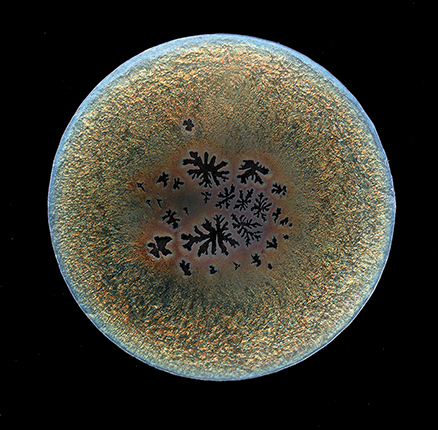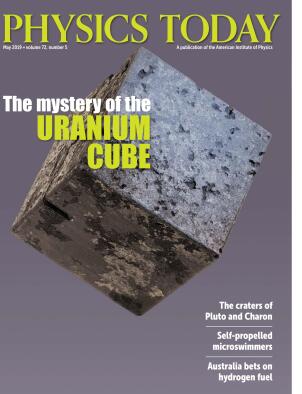Exploring scientific images with creativity and insight
DOI: 10.1063/PT.3.4205
Felice Frankel’s Picturing Science and Engineering is, in a word, remarkable. Despite its length—more than 450 pages—it took me only two days to read. It is a fascinating, wonderful volume that will encourage its readers to think about images, their role in science, and how the world sees science and technology. Creative and insightful, the book is an absolutely unique achievement.

© FELICE FRANKEL

Scientists work to discover new ideas and concepts. After testing those discoveries by experiment, they usually write a paper describing their observations. The resulting insights are often communicated through prose in scientific journals and conference talks.
But words are not the only way to disseminate science. Some of the most effective communication in those articles and talks takes place through images. Picturing Science and Engineering is targeted at readers interested in further exploring the visual communication of science.
The book consists of hundreds of images, each of which has something to show us about science, technology, and the world in which we live. Every picture is accompanied by a description, written by Frankel and her contributing colleagues, that explains the image and why it belongs in the book.

Each of the eight chapters in Picturing Science and Engineering are centered around one technology or theme: flatbed scanners, camera basics, light, phone cameras, microscopy, presentation, image adjustment and enhancement, and case studies. The book is very well devised—its combination of pictures, scientific studies, and writing clearly conveys information. The text is well matched with the striking photographs, which explore the book’s themes by focusing on objects and on interactions between humans and machines.
After perusing sections of the book, readers become aware of how photographs can teach science differently than words or equations. Frankel contends that science is best done by trying to answer a question or make an observation and that it is often necessary to challenge our previous ideas. Readers are reminded that words and concepts are critical for human learning, but they must also critically examine their ideas by interacting with the physical world.
Many of the pages have several photographs of the same object, but the photographs differ in subtle ways to get readers to discern how camera settings and digital edits can affect the final outcome. Those comparisons deepen readers’ understanding of both the photographs themselves and the objects in them.
I suggest that readers approach Picturing Science and Engineering with an open, inquiring mind; they may change their perspectives and ideas as they read, study, and enjoy it. The book presents both challenges and answers, and readers will feel happily rewarded.
More about the Authors
Mark Ratner is an emeritus professor of chemistry at Northwestern University in Evanston, Illinois. His research has covered such areas as nonlinear optical response properties of molecules, electron transfer and molecular electronics, and photonics in nanoscale systems.
Mark Ratner. Northwestern University, Evanston, Illinois.




